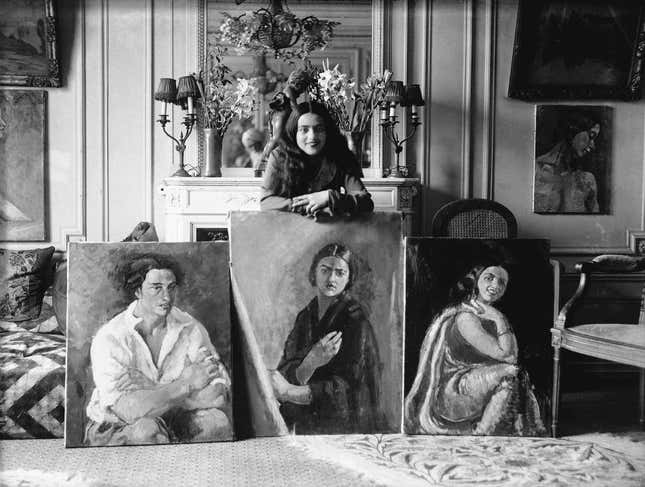It’s always lonely at the top for women, even in the art world.
Of the 20 highest-earning Indian artists, ranked by global auction turnover since 1965, there’s only one female face: Amrita Sher-Gil, the half-Hungarian painter who was often labelled India’s Frida Kahlo. Her paintings have been sold for a total of nearly $14 million, according to a recent report by New Delhi-based art intelligence firm Artery India.
The celebrated and controversial MF Husain, who passed away in 2011 after years of living in self-imposed exile, leads the list, raking in over $136 million in sales.
For Arvind Vijaymohan, founder of Artery India, the results of the study echo the nature of Indian society from the 1900s and beyond.
“If you look at the top 50 artists, only seven of them are women. And that in some manner mirrors society as it was; there weren’t very many women who were writing, or acting, or singing, or doing anything that was really in the public eye,” Vijaymohan told Quartz. He added that only a brave few were able to go against the norm, notably Amrita Sher-Gil herself.
The daughter of a Sikh aristocrat and a Hungarian opera singer, Sher-Gil was born in 1913 in Budapest and later lived with her family in Shimla in India for several years. She studied painting at the iconic École des Beaux-Arts in Paris but it was India that inspired her, prompting a return to the country in 1934, and the blooming of a brief but important career that ended too early with her death at the age of 28.

Sher-Gil’s paintings were influenced by the work of artists like Gauguin and Modigliani and featured women’s bodies front and centre, including her own, which scandalised society at the time. Her outspoken and unconventional personality, and her legendary love affairs, marked her out as a different kind of woman, helping to establish her posthumous cult following. But in her lifetime, her paintings only achieved moderate commercial success.
Today, Sher-Gil is recognised as one of the pioneers of modern art in India and the unique East-meets-West sensibility of her works is particularly interesting for collectors, emerging as it did out of a key period in the country’s history. And that’s made her the best Indian performer in the art market in terms of averaged earnings, Vijaymohan says. Sher-Gil has earned a sizeable sum on the sale of just 22 pieces, far outpacing all the men on the list who have sold much more work. And other woman artists, including Nasreen Mohamedi and Bharti Kher, also come out higher in terms of averaged earnings.
“If anything, they’re actually performing well above market standards,” Vijaymohan said. “Husain may be number one in the (top 50) list but the figure that he’s raised comes on the back of nearly 1,800 works.”
Ultimately, talent does count, and India’s female artists are reaping the benefits.
